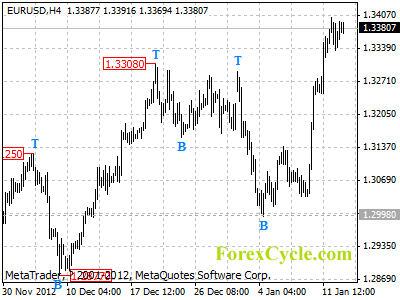London Gold Market Report
from Ben Traynor
BullionVault
Tuesday 15 January 2013, 08:00 EST
SPOT MARKET prices for gold bullion rose to a two-week high above $1680 an ounce Tuesday morning in London, before dipping back to just below that level before lunchtime, while stocks and commodities were slightly down on the day and the US Dollar ticked higher, with US policymakers continuing to disagree on fiscal matters.
“Gold is still expected to stay above the $1625 January low,” says Commerzbank senior technical analyst Axel Rudolph, “but looks to be short-term range bound.”
“As long as the environment of negative real interest rates persists, gold will remain on the shopping list of investors,” adds a note from refiner Heraeus.
Germany’s central bank meantime plans to repatriate some of its gold bullion held at the Fedral Reserve Bank of New York and all of its gold vaulted in Paris, according to a report from German newspaper Handelsblatt.
Like gold, silver touched a two-week high this morning, hitting $31.39 an ounce, before it too eased lower.
The US economy “is not out of the woods” according to Federal Reserve chairman Ben Bernanke, speaking at a question and answer session at the University of Michigan Monday.
“I want to be clear that while we’ve made progress, there’s still quite a ways to go before we’ll be satisfied…we are approaching a number of other critical watersheds.”
Bernanke noted that politicians are yet to agree a deal that would remove automatic spending cuts that were postponed to the start of March as part of the fiscal cliff deal, nor is there agreement on raising the $16.4 trillion debt ceiling.”
“It’s very, very important that Congress takes the necessary action to raise the debt ceiling to avoid a situation where our government doesn’t pay its bills,” Bernanke said.
“Congress should act as soon as possible,” says a letter dated yesterday from Treasury secretary Timothy Geithner to Republican House of Representatives speaker John Boehner, “to extend normal borrowing authority in order to avoid the risk of default and any interruption in payments.”
The letter adds that the Treasury expects its extraordinary measures designed to keep the US from hitting the debt limit will be exhausted “between mid-February and early March”.
“The full faith and credit of the United States is not a bargaining chip,” President Obama told a press conference yesterday.
“[The Republicans] will not collect a ransom in exchange for not crashing the American economy.”
“The American people,” responded Boehner after the press conference, “do not support raising the debt ceiling without reducing government spending at the same time.”
“We likely will see more protracted bickering in the weeks ahead,” says Ed Meir, metals analyst at INTL FCStone.
“This means that the gold market may go through a repeat of what we saw in December, namely, varying ‘mood swings’ that will result in directionless trading.”
Here in the UK meantime, consumer price inflation held steady at 2.7% last month, according to official data published Tuesday.
German consumer price inflation was also unchanged in December, at 2.1%, figures published this morning show.
On the currency markets, the Euro rose to a 13-month high against the Swiss Franc Tuesday.
Over in Vietnam, owners of gold bars are finding it difficult to sell their bullion, local news site Tuoi Tre reports, since the central bank restricted the number of firms licensed to deal in gold under new rules that came into effect last week.
“Many customers still bring their gold bars to sell at our company,” says Le Phat Vinh, director at SJC Can Tho, which now has to direct them to other firms as it no longer has a license.
“Many banks have yet to offer the gold bullion trading service, despite obtaining the licenses,” Vinh added.
Vietnamese press last week reported a narrowing in the gap between local gold prices and those quoted on international markets, citing prices from the central bank-controlled Saigon Jewelry Co, which became the state brand for gold bars last year and is the country’s largest producer.
Platinum is more expensive than gold again for the first time since March last year, after the price touched $1700 an ounce this morning after the world’s biggest producer Anglo American Platinum (AmPlats) said it plans to close two mines in South Africa and sell a third.
The move that see 14,000 jobs cut, out of a total of 60,000 AmPlats workers. The move is not a “reprisal” for last year’s industrial action, said AmPlats chief executive Chris Griffith, referring to strikes that affected several major platinum producers in South Africa.
“[AmPlats] will not be the last company to cut output,” says John Meyer, partner at brokerage SP Angel in London.
“We would expect platinum miners to pull back by 25-30%, which is going to have a severe impact on prices.”
Gold value calculator | Buy gold online at live prices
Editor of Gold News, the analysis and investment research site from world-leading gold ownership service BullionVault, Ben Traynor was formerly editor of the Fleet Street Letter, the UK’s longest-running investment letter. A Cambridge economics graduate, he is a professional writer and editor with a specialist interest in monetary economics. Ben writes and presents BullionVault’s weekly gold market summary on YouTube and can be found on Google+
(c) BullionVault 2013
Please Note: This article is to inform your thinking, not lead it. Only you can decide the best place for your money, and any decision you make will put your money at risk. Information or data included here may have already been overtaken by events – and must be verified elsewhere – should you choose to act on it.


